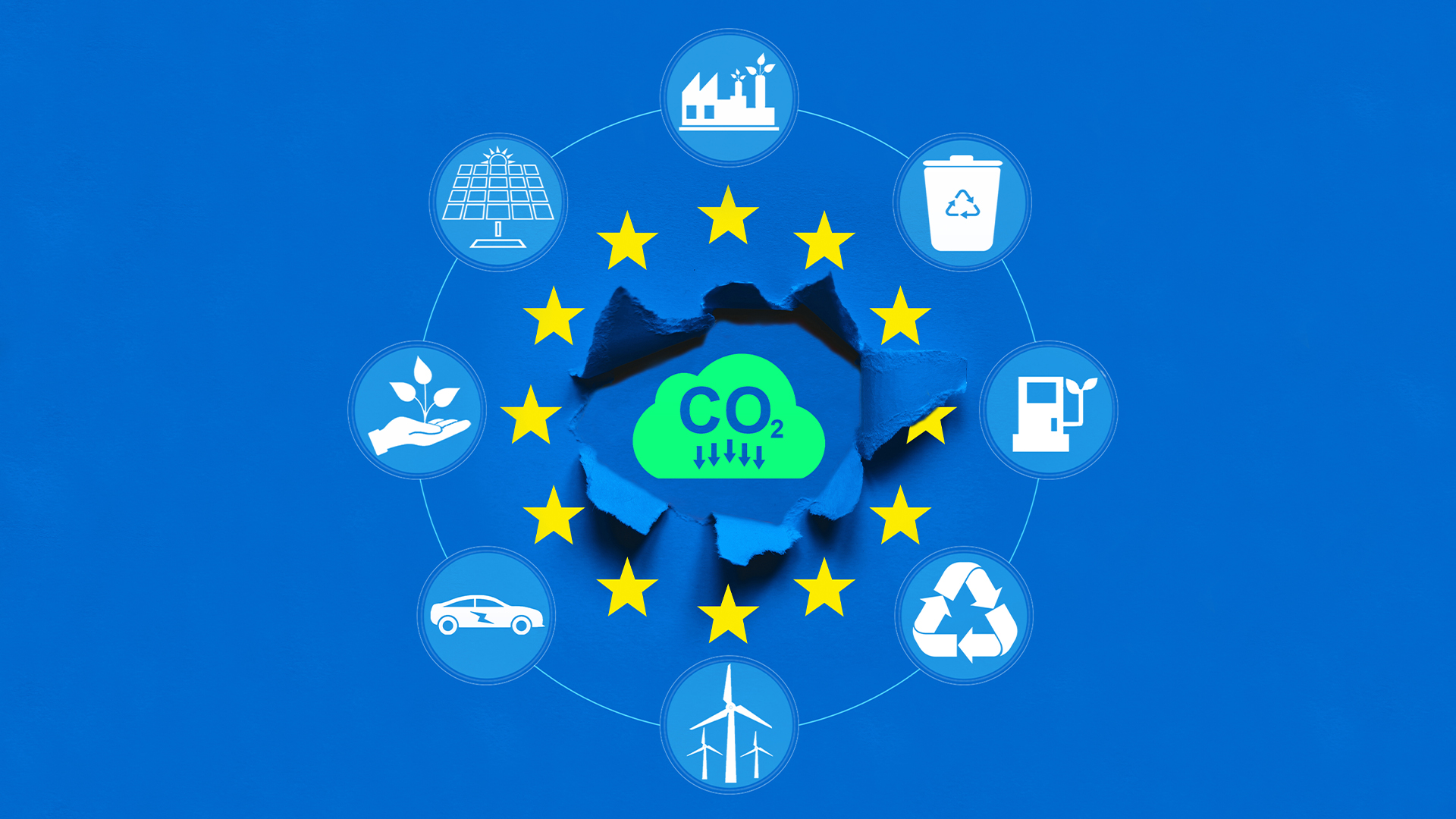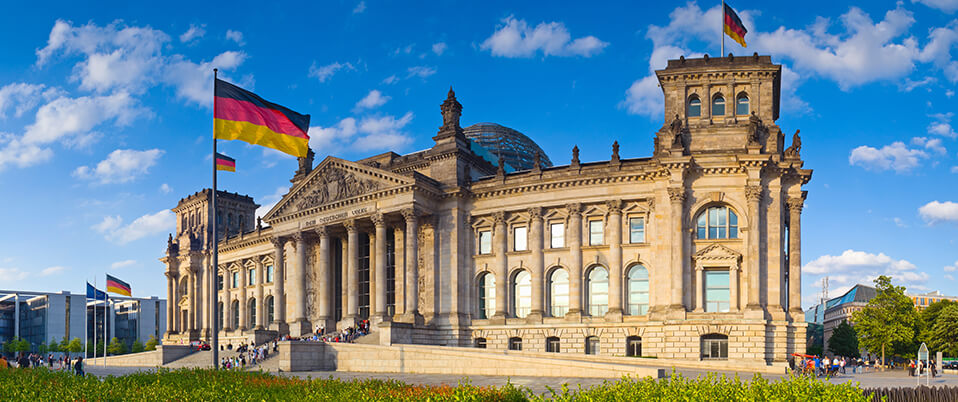
European businesses and institutions have been striving hard to achieve a variety of different sustainability goals over the last several years. As climate change and global temperature rises have dominated news cycles, many have taken ambitious steps to optimise their resources while maintaining that all-important competitive edge. Economic turbulence and geopolitical disruption have certainly not made matters any easier whatsoever.
In recent years, we have begun to see a more concerted effort by the European Union to achieve and exceed its climate goals. In an attempt to tackle climate change, the European Parliament adopted the European Climate Law. This raises the EU’s targets of reducing net greenhouse gas emissions by 55% by 2030 and makes carbon neutrality by 2050 legally binding.
The Green Deal marked the first step towards addressing the ongoing and worsening climate crisis. The European Commission unveiled a package of proposals to make sustainable products the norm throughout the EU, empowering consumers to embrace the transition to green practices, and, the subject of this article, boost circular business models. The Green Deal doesn’t just target the climate emergency, it focusses on transforming the EU into a modern, resource-efficient, and competitive economy that maintains growth.
The past 18-24 months have seen the introduction of new EU-wide rules on packaging and increased attention on switching to biodegradable, compostable and otherwise recyclable plastics. Many other EU circular economy policies and suggestions have been reinforced. However, they still must become more binding and targeted to accelerate the uptake of a more regenerative economy throughout Europe.
Bolder action and stronger implementation of existing measures are vital to achieving the ambitious goals set forth by the EU. Let’s explore the current state of Europe’s circular economy plans, recent policy changes, and what the road ahead looks like in terms of achieving a more sustainable economic model across the continent.
The Circular Economy Action Plan: a Key Part of the European Green Deal
The European Commission describes its plans to achieve a circular economy as a fundamental building block of its Green Deal.
It aims to make sustainable products the norm in the EU, reduce waste, and lead global efforts on resource management, focusing on high-impact sectors such as:
- Construction
- Electronics
- Textiles
- Food
- Plastics
- Waste
By looking at the lifecycle of products and materials, opportunities to optimise supply chains are considered, while still ensuring that consumers are not subjected to inferior product quality.
The EU is scrutinising its current legislation that ensures consumers have access to more sustainable products, are better protected and can still exercise their rights. Despite recent legislative progress, transitioning to a fully circular economy in Europe remains difficult.
Circular Economy Data
Recent data and trends paint a mixed picture:
- Recycling rates have increased across the EU, but there is still substantial room for improvement to achieve municipal waste (55%) and total packaging waste (65%) recycling targets in 2025.
- As of 2022, Europe’s circularity rate stood at 11.5%, which, while higher than other world regions, falls short of EU goals of doubling this (23.2%) by 2030.
- Fossil fuel power generation in Europe declined by 19% in 2023, with the global region increasing efforts to source renewable energy and reduce dependence on Russian fuels.
- Circular business models are gaining traction, as evidenced by global electronics retailer MPB recirculating hundreds of thousands of products, maintaining plastic-free packaging and sourcing energy from renewable sources. This is one of many EU-based companies taking circularity seriously and adopting innovative approaches to resource use.
What Progress Has the EU Made?
To speed up its goals of achieving EU climate neutrality by 2050, the Commission and the Council have been working hard to address key directives and measures outlined in the Green Deal and Circular Economy Action Plan.
Here is just a snapshot of what’s been done recently:
- In May 2024, the Council adopted the right-to-repair (R2R) directive, a free-of-charge European repair platform allowing consumers to request manufacturers repair technically repairable products. It also extends sellers’ liability periods post-repair by 12 months.
- The Council adopted new eco-design requirements for sustainable products and goods placed on the EU market, prohibiting the destruction of certain commodities that are not sold.
- The Industrial Emissions Directive (the main piece of legislation addressing industrial pollution) sets forth plans to set emission thresholds for over 90 pollutants such as methane, ammonia, and mercury.
- The Council adopted directives to empower consumers for the ‘green transition’, giving consumers access to reliable information to make choices about product purchases and repairability.
- The EU has agreed on a green claims directive which holds companies that make environmental claims to account, to avoid greenwashing.
- New rules will enable consumers to buy more durable and energy-efficient electronic devices and tablets on the EU market with improved energy labelling and eco-design regulations.
- Businesses trading within the EU (but that are not members) must divulge ESG compliance to suppliers as part of the EU Corporate Sustainability Due Diligence Directive (CSDDD).
- The EU has adopted new regulations on batteries to target all stages of their lifecycle and ensure fairer market competition.
- A provisional agreement on packaging and packaging waste rules has been reached, with measures supporting reuse and refill, deposit returns, and waste reduction all proposed.
- The Commission is still working on mandatory recycled content requirements, policy frameworks for biobased, biodegradable and compostable plastics and measures to address microplastics.
- The Council has reached an agreement on a revision of the waste framework directive, subjecting fashion brands and textile producers to pay fees to fund textile waste collection and management, as well as remain responsible for products’ entire lifecycle.
- Speaking of waste reduction targets, EU countries would have to cut down food waste by 10% (processing and manufacturing) and 30% (in retail and consumption) following new proposed amendments to the framework.
- A provisional deal has been reached concerning construction regulations, with manufacturers now obligated to provide environmental information about products, design products that facilitate reuse and recycling, prioritise recyclable materials, and more.
The proposed new legislation will mean that EU member states are more streamlined in terms of their sustainability efforts under these frameworks. Compliance should therefore be easier given the more uniform rules across the EU, but companies that are outside the EU and that trade into the EU will also need to comply.
As far as creating a circular economy goes, the EU is evidently steadfast and committed to its goals. Businesses should therefore think carefully about their current and future contracts and business relationships if operating within the EU. While these new laws and regulations may not take effect immediately, it will no doubt be crucial to consider what these mean for your current packaging, manufacturing, logistics, labelling, and other processes.
What’s Next for EU Businesses?
The concept of a circular economy has evolved into more than just a buzzword; it’s a tremendous opportunity for businesses – and the region as a whole – to drive innovation and create a more sustainable future for the next generations. The EU clearly believes that economic prosperity and environmental responsibility go hand in hand, and is taking steps to achieve that and set an example for other world leaders.
Moving forward, the EU will continue to review and amend its frameworks, policies, targets, and directives in the wake of evolving environmental and economic data. By doing so, businesses trading in the EU will need to be mindful of what could come in the near future, as challenges will no doubt be on the horizon.
In time, however, the benefits of circular economy models will hopefully become clear, where not only will greenhouse gas emissions and carbon footprints be exponentially reduced, but new market opportunities and jobs will be created. While certain outdated and resource-intensive models get abandoned, newer and more eco-friendly strategies take their place, all while reducing dependence on finite materials.




























